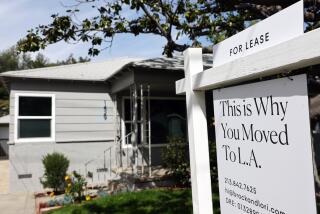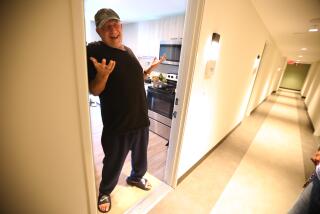Experimental Health-Care Program for Elderly : SHMO Offers Medical, Social Aid
- Share via
In Long Beach, 720 senior citizens are pioneering a novel way to confront the health-care costs of old age: They go to the SHMO. And if they’re not up to the trip, the SHMO goes to them.
SHMO? That’s government talk for “social health maintenance organization,” which may sound like gobbledygook but stands for a serious, experimental approach to health care for the elderly.
The goal of the federally sponsored project, one of four in the nation, is to help the aged live independently at home when possible, avoiding the devastating cost of long stays at nursing homes or hospitals.
The Long Beach-area SHMO, run by the nonprofit Senior Care Action Network, provides two kinds of services.
It offers medical care like other prepaid health plans or health maintenance organizations. But it also offers an array of “social services” for members who are battling chronic illness. Depending on a person’s needs, these may include home visits by health aides and housekeepers, home delivery of meals and prescription drugs, even cab rides.
The theory is that, if SHMO responds to each member’s needs with the correct mix of medical and personal care, the result will be less institutionalization--with savings for everybody, including the taxpayers.
“It takes the HMO concept and goes a step farther,” said Jay Greenberg, a Brandeis University researcher who is national director of the SHMO project for the Health Care Financing Administration, the federal agency that administers Medicare.
To determine that mix, a SHMO staffer coordinates each case--doing things like making sure a member gets a ride to the doctor’s office or seeing to it that the person’s telephone is adjusted to compensate for hearing loss. This can save members the hassle of arranging several different services for themselves.
“If we do it right, you have a healthier person, a happier person--and a lot of savings of money,” said Sam L. Ervin, president of the Long Beach project, which is officially called the SCAN Health Plan.
Consider the case of Mrs. A, a 92-year-old woman whose deteriorating eyesight finally made it impossible for her to clean the house, go shopping or get to the doctor. A SHMO physician performed a needed breast biopsy. A caseworker then planned for delivery of meals, housekeeping visits, counseling, special amplification of her telephone and other services, including eventual transportation to adult day care.
And Mrs. A’s out-of-pocket expense is likely to be a small fraction of the $2,000 to $3,000 it would have cost her to be institutionalized.
Membership Qualifications
“Now she’s getting better,” said Sheela Mehta, director of case management at the health plan. “Soon she will be going to day care.”
To qualify for membership, people must live in the Long Beach area, continue to pay their $15.50 monthly Medicare premiums and, except for low-income clients, pay an additional $40 a month to SHMO. Visits to the doctor and stays in the hospital are completely covered.
There are charges, however. For example, dentures cost $50 and prescriptions cost $2.
Medical care is provided by a network of local physicians who adhere to the traditional cost-conscious HMO approach of avoiding unnecessary hospitalization and costly procedures. Most of the financing comes from the federal government, which pays the program about $310 a month for each member, the projected cost of treating the individual under the Medicare system.
The key question is whether the financing will be adequate to cover the ambitious menu of social services that SHMO offers through contractual arrangements with a handful of Long Beach businesses.
To stay in the black, it has set a $7,500 maximum on the special benefits that it offers the chronically ill, based on charges by the subcontractors. In addition, the coverage for nursing-home stays, while greater than Medicare offers, is limited.
But, despite success stories such as that of Mrs. A, skeptics wonder how successful the new projects ultimately will be at keeping the chronically ill away from nursing homes and other expensive long-term care.
Fearful that the experiment might pave the way to costly new federal benefits, budget-cutters at the Office of Management and Budget last year attempted to kill SHMOs, which also operate in Brooklyn, N.Y.; Minneapolis and Portland, Ore. The plans enjoyed so much popularity, however, that Congress blocked the move.
More Evidence Available
As a result, the federal experiment is scheduled to last until late 1988, when more evidence will be available about whether comprehensive medical and personal services can be combined--and offered at affordable rates. By then, the Long Beach plan expects to have 7,500 members, and thousands of others will have signed up in the other cities.
Both federal officials and private insurers are watching the experiment with interest as society wrestles with the costs of supporting increasing numbers of the elderly in a humane manner.
“If the SHMOs can live within their budgets, deeper insurance coverage for the elderly will become available,” researcher Greenberg predicted.
Despite the uncertainties, Ervin promises that the Long Beach SHMO, in some form, is here to stay. “We do intend to continue,” he emphasized. “We’re exploring ways to continue the program as close to its current model as possible.”
More to Read
Sign up for Essential California
The most important California stories and recommendations in your inbox every morning.
You may occasionally receive promotional content from the Los Angeles Times.













